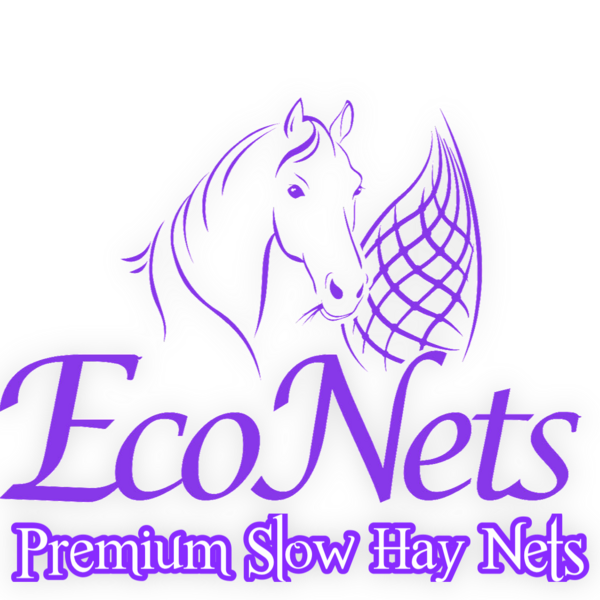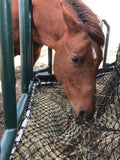EZ Feeder Net Kits
EcoNets
Our Regular netting has arrived !! We'll be working hard to make the Reg net Back Orders and get them shipped out.
- HD 1.5" netting is still currently out of stock and is now expected the beginning of January.
* Orders placed will be sent out in queue, first ordered, first sent.
We apologize in advance for any inconvenience.
EZ Feeder Net Kits attach an EcoNet hay net to "your" bale feeder to create an all-in-one slow feeder system. They work on all types of feeders: metal, poly, composite, wood, round, square, etc. Our kits will help you create a slow feeding system, that suits you.
Our customers have used these to attach onto store-bought feeders of all kinds, homemade feeders, elevated & ground level, even upside down where they drop the bale in from the top.
Note: If you've built a feeder using our nets and/or kits be sure to send us photos/videos of it & get featured on our photo's page.
To Install:
- Open up the packaging (preferably in a warm area). Gather the hardware parts (hose, 1 connector, 2 hose clamps, + zip ties) and you'll need a flat screwdriver & hose cutter/exacto knife. We suggest weaving the hose where it's warm & then taking it out to your feeder.
- Stretch out the net and starting at the seam of the open end, fold over the edge of the net to make 2 layers.
- Starting at the seam, begin weaving the hose through every other opening of the folded-over edge (for 1" nets weave + skip every 3rd opening). Slide the woven net further onto the hose and continue until the net is completely woven over the hose.
- Insert the connector into one end of the hose, add the clamp and tighten. Then connect the opposite end of the hose (temporarily) so the net doesn't come unwoven.
- Then set the assembled net inside your feeder. Slide the net over the hose so it is fairly evenly distributed around the inside of your feeder.
- Now figure out where you will be attaching the hose to the inside of the feeder. *Do not attach to the very bottom (when you lift the feeder the net may stay frozen to the ground) We suggest attaching it closer to the top horizontal rungs.
- Start attaching the hose to the feeder with the zip ties provided, about 1 ft apart, all the way around, making sure the net is evenly spaced. Once you know how much extra hose there is, cut off the excess, re-attach the connector & tighten the clamp. Then add more zip ties as needed.
- Set the bale on its side, if it will fit in feeder this way- if not set but end down, remove the twines & set the feeder over the bale.
All done!
Tips:
- If the feeder is smaller in diameter than the hose, disconnect 1 end of the hose from the clamp, slide the net away from the open end of the hose & continue with step 5.
- If your feeder is open or has rungs at the bottom, close it in with netting, belting, or puck board (if possible) before installing the EZ Feeder Kit. ** We now offer netting strips to help enclose the bottom of open feeders, install these on the inside of feeders so horses cannot paw + get caught on the net.
- place your feeder in a spot that has wind protection
- place shavings or straw before you set out your bale to prevent freezing
- customers have set down railroad timbers where they plan to feed
Other Feeder Types:
- If you have a lightweight feeder, you can roll the feeder with the net kit attached to the bale and then set it over the bale.
- Another option for people with really big feeders is to not attach the hose to the feeder, drop the bale into the feeder, then set the net back over the bale and use velcro or re-usable zip ties, so you are able to attach + un-attach to the feeder as needed.
- Basket feeders are set up so the hose + net is removable. To put the hay in use velcro or zip ties that can be re-used to open + close the hose to the feeder.






















